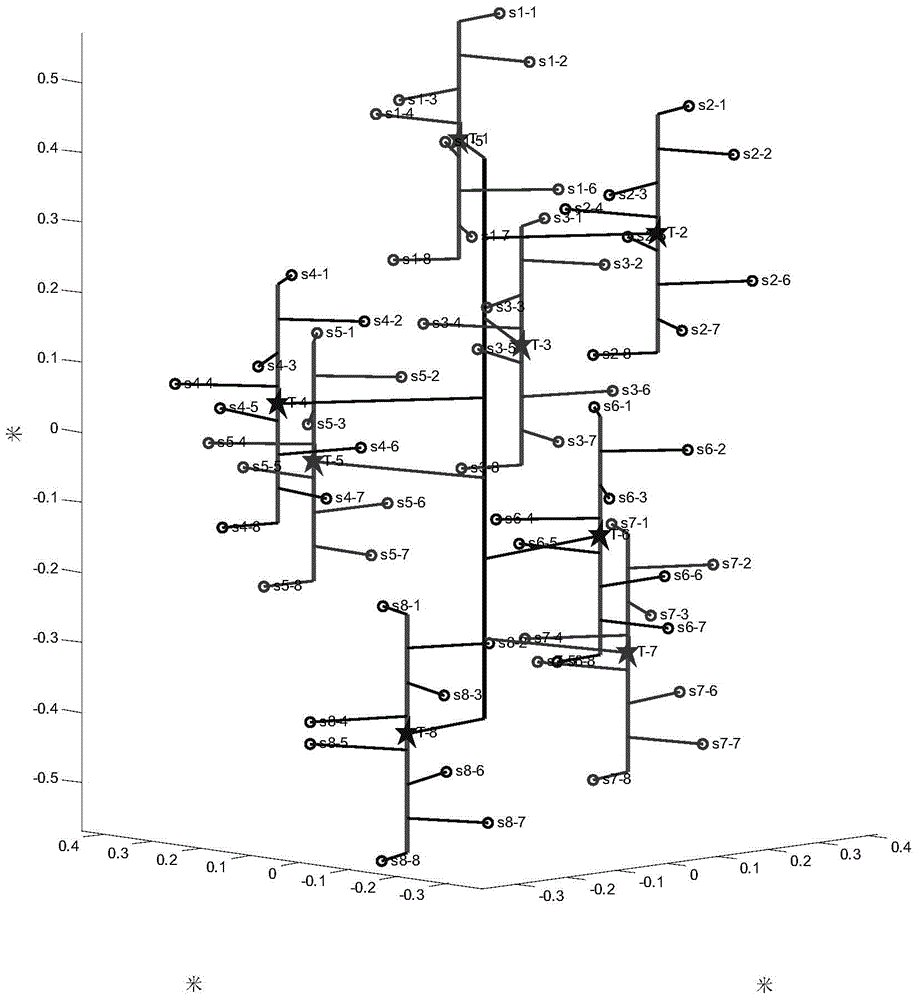Sending-receiving combining composite double-ellipsoid spiral line array
A technology of helix and double ellipsoid, which is applied in the field of sending-retracting composite double ellipsoid helical array, which can solve the problems of inapplicability of free field model, distortion, and no longer maintaining the shape of the transmitted waveform.
- Summary
- Abstract
- Description
- Claims
- Application Information
AI Technical Summary
Problems solved by technology
Method used
Image
Examples
Embodiment Construction
[0056] Such as figure 1 and figure 2 As shown, with the number of transmitting array elements N=8, K T =4 / 3, vertical aperture H of the emission array T =0.8m, horizontal aperture W T =0.6m, initial azimuth φ 0 =11.25°; the Cartesian coordinates of each receiving array element is the number of receiving array elements M=8, K R =34 / 30, vertical aperture H of the emission array R =0.34m, horizontal aperture W R =0.3m, the initial azimuth angle of the i-th sub-array is φ i0 =i*8.4375° is taken as an example to design the three-dimensional formation of the present invention.
[0057] (1) The numbers of the CDSLA transmitting elements are as follows: the numbers of the first SLA are: T1, T3, T5, T7, and the numbers of the second SLA are T2, T4, T6, T8.
[0058] (2) The ellipsoid surrounded by the helix of the DSLA sub-array, the vertical semi-major axis c T =H T *(N+1) / (N-1) / 2=0.5143m, the two horizontal semi-axes are equal, a T =W T / 2=0.3m.
[0059] (3) The azimuth ...
PUM
 Login to View More
Login to View More Abstract
Description
Claims
Application Information
 Login to View More
Login to View More - R&D
- Intellectual Property
- Life Sciences
- Materials
- Tech Scout
- Unparalleled Data Quality
- Higher Quality Content
- 60% Fewer Hallucinations
Browse by: Latest US Patents, China's latest patents, Technical Efficacy Thesaurus, Application Domain, Technology Topic, Popular Technical Reports.
© 2025 PatSnap. All rights reserved.Legal|Privacy policy|Modern Slavery Act Transparency Statement|Sitemap|About US| Contact US: help@patsnap.com



